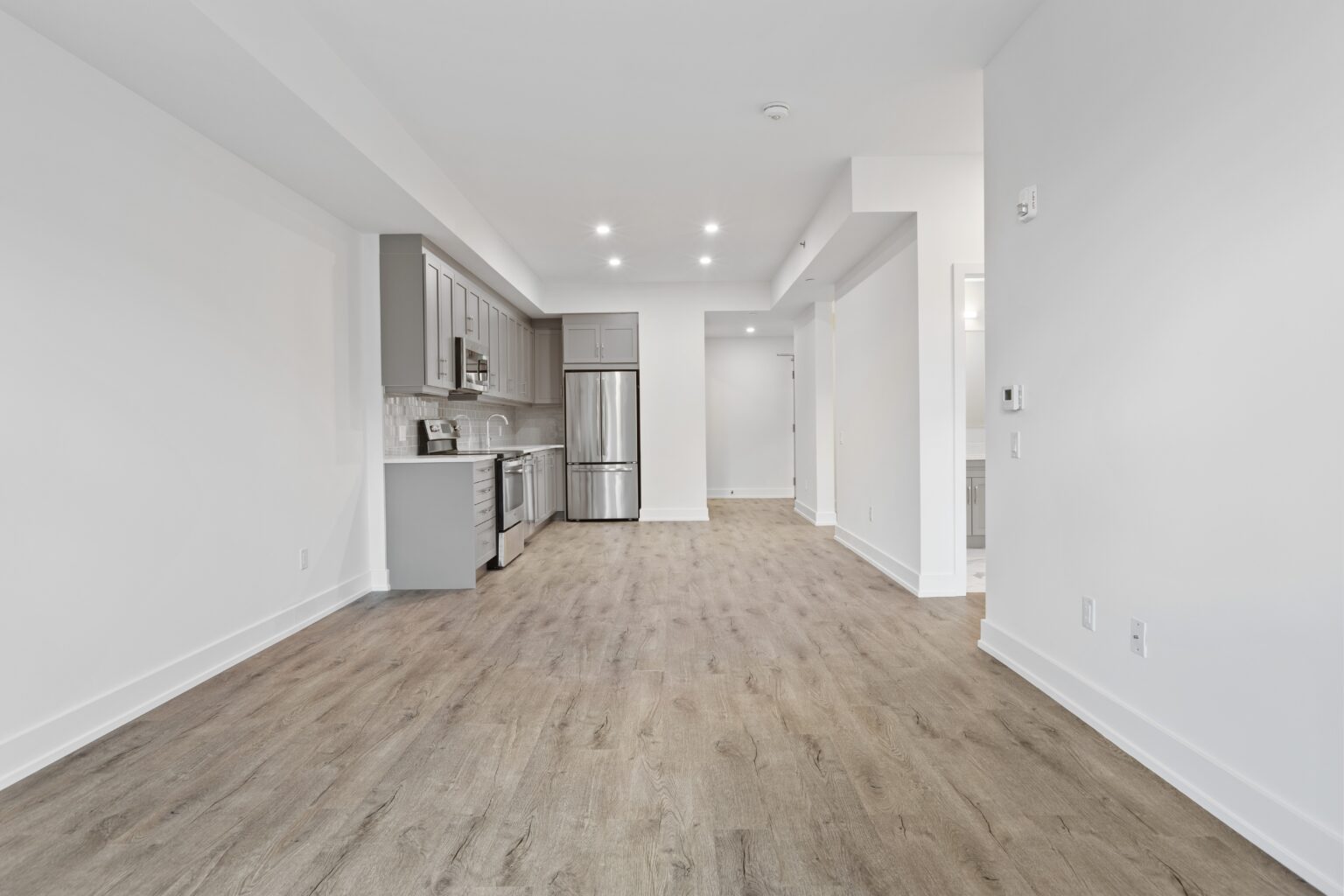Is Value-Add Real Estate a Good Investment Strategy?
Value-add real estate is a way of investing where you buy properties that are already earning money but have the potential to be improved. These properties usually need work to make them more profitable, like upgrades, rebranding, or even complete redevelopment. Some examples are an office building or an apartment building. By making these improvements, they can earn more rent, keep tenants longer, and increase the property’s overall worth.
Investors in value-add real estate hope to make more money from the potential income and increased property value after they’ve made improvements. The goal is to find properties that are cheaper than they should be, usually because the previous owners couldn’t afford to maintain them or didn’t take care of them. The investors then make the necessary improvements to increase the property’s value. This way of investing usually expects a higher profit, about 13% to 15% per year, compared to traditional real estate investments.
This strategy is a good fit for investors who are okay with taking on high risk because it might cost more money, take more time, and require more knowledge to manage the improvements. However, when done right, value-add real estate can be a great way to earn a lot of money while helping improve neighborhoods and communities.
Join the Passive Investors CircleWhat Is Value-Add Real Estate Investing?
Value-add investing refers to purchasing real estate properties that require improvements and then making these improvements to increase the property’s value.
This strategy aims to generate higher returns by capturing the appreciation in the property’s value alongside the increased income potential from the property.
What Are The Fundamentals of Value-Add Strategy?
With value-add investments, the focus is on identifying properties with strong potential for improvements. These include:
- Underperforming properties: Properties not generating optimal income due to mismanagement or other operational issues.
- Physically distressed assets: Properties in need of repairs or renovations to enhance their appeal and functionality.
- Financially distressed properties: Real estate assets where the owners are unable or unwilling to invest in necessary improvements or maintenance.
The core objective of value-add strategy is to increase the property’s income potential and overall value through targeted improvements, effective property management, and strategic asset repositioning. Key steps involved in this process include:
- Acquisition: Identifying and acquiring suitable value-add properties based on thorough market research and due diligence.
- Improvements: Implementing targeted improvements to enhance the property’s condition, appeal, and functionality.
- Management: Introducing effective property management practices or partnering with experienced operators to optimize the property’s performance and income generation.
- Disposition: Selling the improved property at a higher value to capture the appreciation in the property’s value.
A well-executed value add strategy enables investors to unlock hidden potential in underperforming real estate assets, yielding higher returns than traditional buy-and-hold investments. It’s important to note that this strategy carries a higher level of risk and requires a thorough understanding of real estate markets and the ability to accurately assess the property’s potential for improvement.
How To Identify Value-Add Opportunities
#1. Commercial Properties
Commercial real estate investors can identify value-add opportunities by looking for underperforming properties in terms of occupancy, rental income, or tenant quality.
Some might have vacancies, deferred maintenance, or outdated building designs. In these cases, investors can:
- Improve the property’s physical appearance, using renovations or upgrading building systems
- Enhance management operations to increase tenant satisfaction and retention
- Reposition the asset within the market through better lease terms or targeting different tenant segments
#2. Multifamily Properties
Multifamily investors often focus on properties with the potential for increased occupancy and rental income. Value-add opportunities in multifamily properties include:
- Identifying properties with below-market rents and the potential to increase rental rates after renovations or improvements
- Targeting properties in areas experiencing population or job growth
- Improving unit interiors, common area amenities, landscaping, or energy efficiency to attract and retain tenants
Multifamily investors should also evaluate the property’s financial performance, including the expense-to-income ratio, to identify potential cost savings and revenue enhancement areas.
#3. Single-Family Homes
Value-add opportunities for single-family homes often involve identifying distressed properties, outdated interiors, or neighborhood trends that can be capitalized upon with strategic investments. Investors should:
- Look for homes in need of renovations or repairs that can attract higher-quality tenants or buyers
- Find homes in neighborhoods experiencing economic growth or infrastructure developments
- Consider properties with the potential for additional revenue streams, such as renting out a basement or adding a backyard rental unit.
Don’t Miss Any Updates. Each week I’ll send you advice on how to reach financial independence with passive income from real estate.
Sign up for my newsletterValue-Add Strategies
Value-add investors can achieve goals through physical improvements and operational enhancements. Here are the main ways to do both:
| Strategy | Examples |
|---|---|
| Physical Improvements |
|
| Operational Enhancements |
|
How To Evaluate Value-Add Potential
#1. Risk Profile
Risk can vary depending on the following:
- location
- property type
- market conditions
Properties with higher risk profiles may offer higher potential returns but also carry a greater possibility of loss.
For value-add investors, understanding the risk profile and having a well-thought-out strategy to mitigate risks can significantly influence their investment decisions. It’s also essential to evaluate the property’s historical performance and stability of cash flows during the holding period.
#2. Investment Returns
In value-add real estate, investors focus on achieving increased returns through capital appreciation and improved NOI. Comparing the property’s initial cap rate with its potential cap rate after renovations is a valuable metric for determining the investment’s attractiveness.
For instance, if an apartment building is acquired at a 6% cap rate and, through renovations and improved property management, the cap rate increases to 8%, it can lead to substantial value appreciation and higher returns for the investor.
#3. Property Analysis
A thorough property analysis is essential in identifying whether a real estate asset has good value-add potential. This process includes comparing the property to local comparable properties (comps) to identify the required improvements, property constraints, and potential opportunities.
For apartment buildings, a value-add opportunity may arise from identifying underutilized spaces that can be repurposed or amenities that can be added to improve living conditions.
Renovations to individual units, such as implementing energy-efficient appliances or modernizing finishes, can also enhance a property’s desirability and value.
Value-Add Case Studies
Mobile Home Park Transformation
A potential mobile home park transformation case study might involve an investor acquiring an undervalued property with low occupancy, requiring capital improvements and repositioning.
The investor could increase the property’s value and rental income by making targeted investments, such as:
- upgrading infrastructure and amenities
- attracting higher-quality tenants
- increasing occupancy rates
For example, they could acquire a mobile home park with a mix of older, poorly maintained homes and empty lots near a growing multifamily property or shopping center. This proximity can attract potential tenants seeking affordable housing options and improve the property’s overall value-add potential.
If you want to learn more about mobile home park investing, check out this video:
Apartment Complex Revitalization
An apartment complex revitalization case study can showcase how an investor transformed an underperforming multifamily property into a valuable asset. This could involve a combination of physical improvements (e.g., renovating units, improving common areas, adding amenities), operational changes (e.g., improving management, adjusting rents), and marketing strategies (e.g., rebranding, targeting a specific tenant demographic).
For instance, an investor might acquire a dated, poorly managed-apartment complex near an office building. The investor can attract higher-quality tenants and boost rental income through renovations, an upgraded leasing model, and leveraging the location. This combination of increased occupancy, higher rents, and strategic improvements to the property can significantly enhance its value over time.
Short-Term Rental (Airbnb) Renovation
A short-term rental renovation case study could demonstrate how an investor converted a traditional residential property into a high-performing Airbnb rental. This may involve purchasing an undervalued property in a desirable location, renovating or upgrading the space to appeal to short-term renters, and implementing a thorough marketing plan to attract guests.
For example, the investor might acquire a small, outdated apartment complex near shopping centers and popular tourist attractions. They could then renovate the units, adding modern amenities and design elements to appeal to short-term guests.
By investing in a well-thought-out marketing plan and leveraging the property’s location, the investor can achieve high occupancy rates and strong rental income. These factors, combined with a successful renovation, can substantially increase the property’s value.
Value-Add Challenges and Risks
Higher Risk
Value-add real estate investments inherently carry a higher risk level than core real estate strategies. This is primarily due to the active management required, which often involves making significant improvements to properties, such as renovations, expansions, or redevelopments.
Additionally, these investments typically have shorter holding periods, and their success depends heavily on the investor’s ability to implement and execute the value-add strategy effectively.
One notable challenge is the unpredictable nature of the costs associated with property improvements. Delays in construction, unforeseen expenses, or changes in market conditions can all contribute to increased risk.
Variability in Returns
While value-add real estate has the potential for higher returns than core investments, there is much more variability in the annualized returns. This can be attributed to the various factors that influence the success of a value-add strategy, such as the property’s location, market dynamics, and the investor’s skill in executing their plan.
It’s important for investors to thoroughly assess the potential risks and rewards for any value-add property before committing their capital. This involves analyzing market trends, studying comparable properties, and making informed predictions about future growth potential.
Competition
The value-add real estate sector has become increasingly competitive in recent years as more investors seek opportunities to generate higher returns. This increased competition can make it more challenging for both seasoned and novice investors to identify and secure attractive value-add properties.
To stand out and succeed, investors must understand their target markets, conduct thorough due diligence, and develop a clear strategy for implementing property improvements. Maintaining strong relationships with property owners, brokers, and other key industry players can provide a valuable edge in this highly competitive landscape.
Conclusion
Value-add real estate presents a compelling investment opportunity for those looking to increase property value through strategic improvements and upgrades. By identifying properties with potential for growth, investors can capitalize on the increased value generated by these improvements.
This investment strategy typically involves properties that require renovation or redevelopment, resulting in reduced cash flow to equity or higher upfront funding from the sponsor. However, the long-term benefits of value-add real estate can outweigh these initial challenges, leading to attractive returns for investors.
With careful consideration and due diligence, value-add real estate can provide a viable alternative to other commercial real estate investment strategies, such as opportunistic or core properties. Investors should weigh the risks and returns associated with each strategy and their financial goals before deciding which approach best aligns with their objectives.
Frequently Asked Questions
What is the difference between value-add and opportunistic investments?
Value-add investing involves improving properties to increase their value, while opportunistic investing targets distressed properties or those with operational inefficiencies to take advantage of market mispricing or deep discounts.
How is a value-add strategy executed in real estate?
This involves buying properties, improving them via renovations or better management, and selling at a higher price for profit.
What are key factors to consider when investing in value-add properties?
Important considerations include location, tenant demographic, property conditions, renovation costs, and market factors like interest and vacancy rates.
What are the risks associated with value-add real estate investments?
Risks include hidden costs, overestimating potential rent increases, incorrect tenant demographics, market fluctuations, and potential legislative changes affecting property values.
What are the main advantages of value-add real estate investing?
The main advantages of value-add real estate investing include the potential for higher returns, increased cash flow, and the ability to influence property value through improvements.




